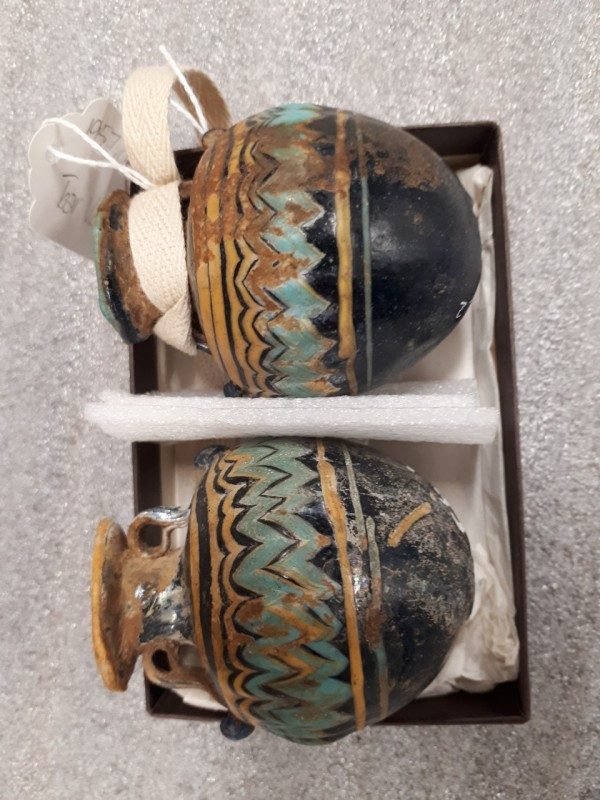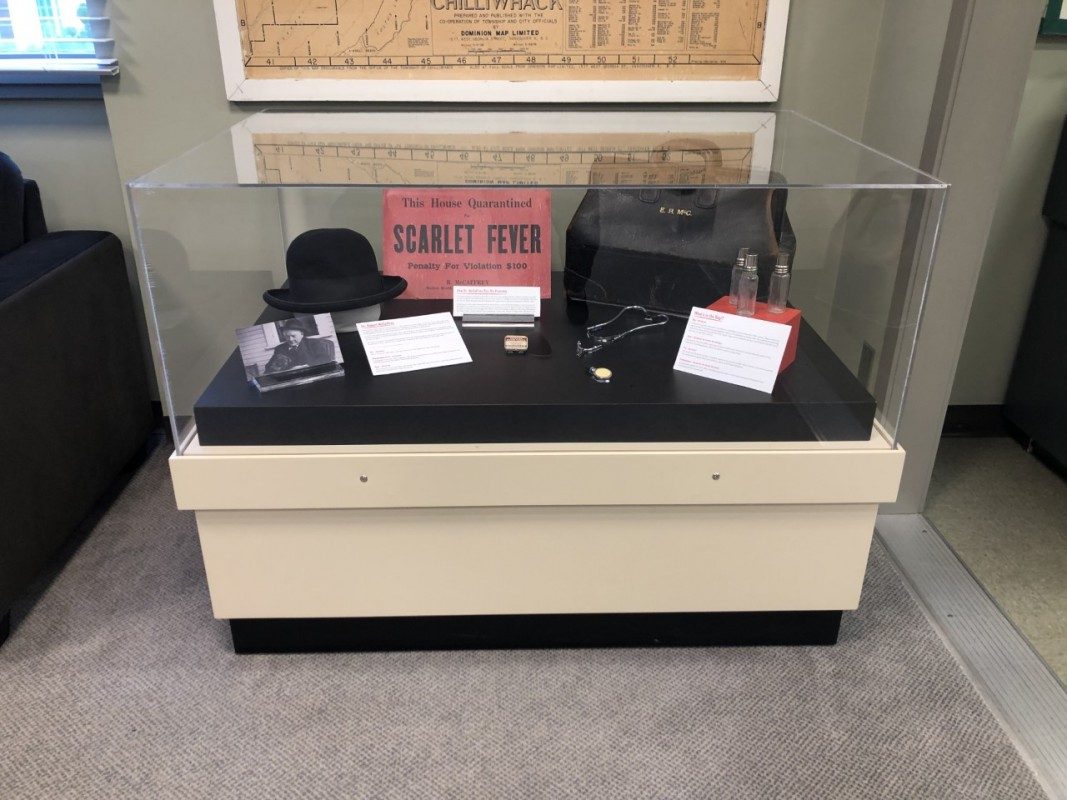By Jordan Sheffield, Archives Summer Student
Working in the Chilliwack Museum and Archives this summer has been a fantastic experience, full of interesting challenges, and learning opportunities. This cannot be truer than in my experiences in working on the two exhibits that took up an enormous amount of my work at the archives, the first being the Five Faces, Five Corners: The Social Experience of Chilliwack’s Downtown, and the second being my own mini exhibit, A Day with the Doctor. These two displays were different for all manner of reasons (scope, involvement, budget, time and even more that I cannot hope to list), so reflecting on the means and ends of both displays over the past couple days has been interesting and something I thought I might share. The whole experience in both exhibits has been fantastic and has certainly given me a greater appreciation for the odd complexities and issues that curators have to face when putting together a display they can feel pride in.
For some context, I joined the museum and archives staff at just about the most chaotic time possible, exhibit changeover. Entering into my first few days the changeover of the temporary gallery was already well under way. Anna, our curator, had already been working on the exhibit preparations for months before any actual work on the gallery itself began. I took part in detail painting, putting up the vinyl text segments and photographs (basically giant stickers), cleaning, aligning lighting (being 6’7” certainly helped with that), mount-making, as well as working with artifacts that were being put on display. The work was often very detail-oriented and forced me to take into account problems that I wouldn’t have considered prior; paint for example, needs to sit and off-gas once applied to plinths before they can be used. With all this said the exhibit came together wonderfully and made for an amazing introduction to the job.
Having come from helping out in the Five Corners exhibit, I had a small inkling of what I was in for when designing my own exhibit. The first step was deciding on the topic I would be working on. I started looking into advertising as a possible exhibit topic, but I ended up going with my second idea: medicine. Once the idea was given the go-ahead, I needed to learn just how much could go into the case and which artifacts best highlighted what I wanted to discuss.

The first significant cut came to a small section on one of the most unusual aspects about the doctor: his collecting. Dr. McCaffrey regularly collected objects from around the world, including a pair of Greek tear vases from ~500 BCE. During the early phase of research, I had been worried about not having enough text or objects. Suddenly, I had too much and needed to reduce and refine the content! Once I had an idea of the space I was working with, things finally started to fall into place.
Finalizing drafted labels was another challenge in the exhibition development process! For the most part, this involved formatting and reducing the size of my labels to make sure that the labels and text were easy to read and the text was able to be read by visitors of all ages. This had brought me nearly to the end of my exhibit now as most of the major thinking had already been completed and what I had left to do was to put all the final pieces together into one cohesive whole. After all the build up to reach this point, the final stages almost felt underwhelming – it’s amazing how quickly an exhibit comes together once all the pieces have been pre-crafted. While the previous steps had taken weeks of work, the final step (the actual mounting of the exhibit) was done in a day. It was an odd feeling when the case was locked, with artifacts beyond my reach, because it had matured from a simple draft on the back table to fully finished. Once it had settled in that the project was fully done, I felt an enormous relief and pride that it was all complete!


Comments are closed.